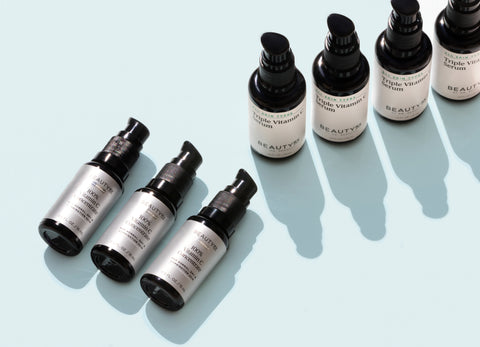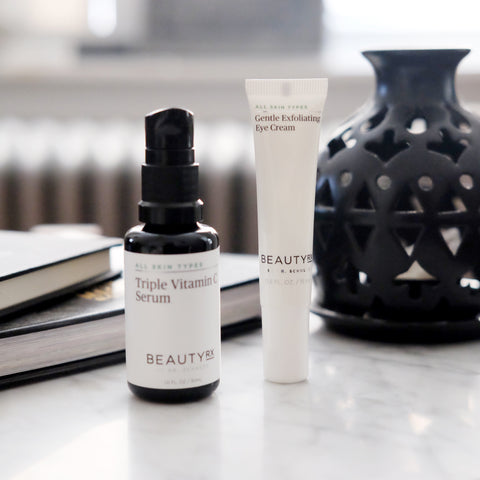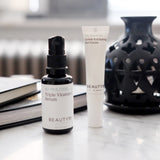
What Is Melasma?
Melasma is a skin condition that manifests in the form of dark, discolored patches on the face. It usually appears on the forehead, below the eyes, and along the upper lip in a horizontal band. The discoloration from melasma occurs due to hormonal imbalances, which cause normal pigment cells to overproduce pigment in a mask-like distribution. Melasma commonly occurs in pregnant women, so much so that it is often referred to as “the mask of pregnancy.” When melasma occurs in the non-pregnant population, the onset can be caused by stress, thyroid disease, and continual overexposure to the sun.
What Is Brown Discoloration?
Brown discoloration is simply a collection of excess brown pigment. Although brown discoloration may appear at the surface of the skin, it actually runs many layers deep. Melanocytes, our pigment-generating cells, are located in lower layers of the skin and create pigment (and in the case of discolorations, excess pigment). As our skin sheds and new layers rise up and are revealed, the brown discoloration that was once deep within the skin also rises to the surface. If the melanocyte continues to create excess pigment, then it will exist within all of the layers, all the way down to the melanocyte.
Why Is Melasma Challenging?
Not only do the unwanted symptoms of melasma cause embarrassment and discomfort, but they are also very difficult to treat. The challenge is that hyper-sensitive pigment cells are more likely to generate excess pigment during treatment from external stressors (eg. UV damage), producing even more excess pigments. Therefore, treatment can often be counterproductive if not done properly.
The Simple 3-Step Treatment Regimen for Melasma
The good news: If you have melasma, there is a simple three-step regimen that will effectively work to combat and treat your symptoms.
Step 1: Daily Exfoliation
According to Dr. Schultz, using exfoliating skincare products with glycolic acid can help to safely and gradually reduce the unwanted brown pigment. They work by removing the layer of superficial dead skin cells that trap excess pigment, thus lightening hyperpigmentation.
With The Progressive Peel you can save yourself a trip to the dermatologist by using this at-home glycolic skincare system. Dr. Schultz’s gentle glycolic system includes several vehicles of exfoliation that will safely reduce excess pigmentation, while providing a gradual and non-irritating way to introduce exfoliation to your daily skincare regimen.
Step 2: Apply a Vitamin C Serum
While exfoliation is the necessary tool to combat melasma at the surface of your skin, using a serum that contains vitamin C is crucial in cutting off the deep-rooted source of excess pigment. In fact, it is a powerful antioxidant that prevents melanocytes from overproducing piment. In doing so, it inhibits new discoloration from forming.
Combining three of the most effective forms of vitamin C, the Triple Vitamin C Serum is proven to reduce the appearance of hyperpigmentation and dark spots. Additionally, it will properly nourish the areas on your face that are not affected by the “mask” distribution of melasma to reveal smoother, brighter, and more youthful-looking skin.
Step 3: Prevent Future Discoloration with Sunscreen
Dr. Schultz says, “Even if you help remove discoloration with an exfoliant and prevent further discoloration with a vitamin C product, unless you’re also using an effective sunscreen every day, the color is just going to come right back, because sunlight on these hypersensitive pigment cells can make additional discoloration quicker than you can treat it.”
The Solar Defense Sheer Sunscreen SPF 50 uses the newest chem-based and chem-free technology for optimal protection against sun exposure. This sheer and light sunscreen still contains a high SPF which will help prevent the deeper darkening of existing brown patches and the appearance of future discoloration.
Dr. Schultz also recommends avoiding carbon-based sunscreens. Traditional carbon-based sunscreens contain chemicals that absorb the sun’s UV energy, resulting in further damage to the melasma-primed melanocytes. Due to this impact on pigmentation, using carbon-based sunscreens can actually be more harmful than helpful in reducing the appearance of melasma.
This three-step skincare regimen — which you can find it the BeautyRx Dark Spot Treatment Kit — combats the discoloration that accompanies melasma. Keep in mind: These treatments don't ensure that your melasma won't come back or that it will be completely lightened. If at-home remedies are not treating your melasma effectively, you should see a dermatologist who can do medical-strength glycolic or salicylic acid peels.
 BRX REWARDS
BRX REWARDS




















Leave a Comment